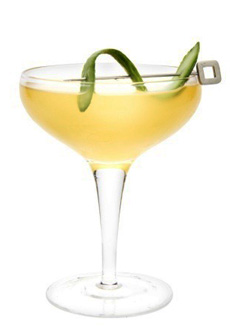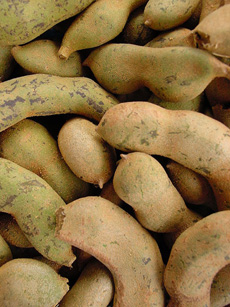RECIPE: The World’s Best Margarita Is The Tamarindo (Tamarind) Margarita
 Is this the best Margarita in the world? It’s pretty special. Photo courtesy Tequila Avión. |
Margaritas come in all shapes, sizes, and in a variety of expressions—from the classic straight up to frozen to flavors such as mango and passionfruit. Some are made with mixes (good, bad and average). The best are made with fresh-squeezed lime juice (ask the server or bartender to be sure you’re not getting reconstituted lime juice).
And then there’s the Tequila. While there are many fine Tequilas on the market (the word is capitalized as it’s the name of the city and state where the spirit is produced), Tequila Avión took five honors* at this year’s San Francisco World Spirits Competition. And, Tequila Avión was the Tequila of choice for the World’s Greatest Margarita. At the Sixth Annual World Margarita Championship held in February in Tucson, Arizona. Gustavo del Toro of the La Fuente Restaurant in Tuscon won the award with a recipe that used Tequila Avión. Here‘s the recipe, in time for weekend leisure. |
|
|
*Tequila Avión Silver won the Double Gold (higher than a mere gold medal) and Best Tequila awards as well as the Best Unaged White Spirit category (beating not only the other tequilas but all vodkas, gins, and rums). The brand also won two silver medals for its aged tequilas, Avión Reposado Tequila and Avión Añejo Tequila. You’ll need to rustle up some fresh tamarind (tamarindo) or buy tamarind purée (check Asian market or online). Fresh-squeezed orange juice will also contribute to a “world’s greatest” flavor. Sourced from the world’s highest quality agave and produced using a rare distillation process, Tequila Avión makes Silver, Reposado and Añejo Tequilas (here’s the scoop on the different types of Tequila). For more information about the brand, visit TequilaAvion.com. TAMARINDO MARGARITA RECIPE Ingredients Per Drink |
||
|
Preparation 1. Combine tequila, Grand Marnier, lime juice, orange juice, tamarind purée and sugar in a blender with cup of ice. Blend thoroughly. 2. Serve in a Margarita or Martini glass rimmed with coarse salt and chili powder. 3. Garnish with a lime wheel and speared tamarind peel. 1. Boil 1-1/2 pounds of fresh tamarinds for approximately 45 minutes or until tender. 2. Allow the fruit to cool; then strain to remove the seeds. Add 1/2 teaspoon of salt and sugar and then blend the fruit pulp into a purée. Makes enough for four Margaritas. |
 Pods, which grow on the tamarind tree, hold the fruit inside. Photo by M.L. Valentin | Wikimedia. |
|
|
WHAT IS TAMARIND? While many people might think of tamarind as an Asian fruit, it is actually indigenous to the Sudan—in eastern North Africa right below Egypt—from where it spread throughout tropical Africa. In the 16th century, tamarind was introduced to Mexico by Spanish and Portuguese colonists, and then to South America. Today, the pod-like fruit is used extensively in cuisines around the world. Mexico and South Asia are the largest growers and consumers of tamarind. The fruit got its name from British sailors, who first discovered it in Oman, on the southeast coast of the Arabian Peninsula. where they disembarked en route to India. It was sold processed into dark brown slabs of sticky paste that looked similar to the ripe dates. The sellers inaccurately referred to it as thamer hind, literally “dates from India,” which the sailors heard as “tamarind.” Known for its sweet-and-sour taste, tamarind is used in both savory dishes and in sweets: jam, juice drinks, ice cream, sorbet and candies. It is an ingredient of Worcestershire sauce, which originated in India: a fermentation of anchovies, chiles, cloves, corn syrup (sugar in the original recipe and the U.K. version), garlic, molasses, onions, pepper, shallots, soy sauce, tamarind, vinegar and water. The History Of Worcestershire Sauce It is believed that a Captain Henry Lewis Edwardes (1788–1866) brought the recipe for the sauce home after travels in India. It is not known how the recipe got to Lea and Perrins, but John Wheeley Lea and William Henry Perrins, two dispensing chemists (pharmacists) in Worcester, England, created a recipe that was first sold commercially in 1837. Known as “The Original Lea & Perrins Worcestershire Sauce,” the brand was purchased by H.J. Heinz Company in 2005.
|
||